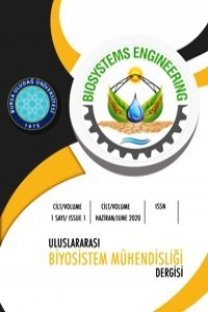Kurcalamaya Dayanıklı Bir Kapak Mekanizmasının Geliştirilmesi
Bir paket içerisindeki orijinal içeriğin başka bir ürün ile değiştirilmesi dünyanın en yaygın sorunudur. Bu tür sahtecilik girişimlerindeki tehlike sadece gelişmekte olan ülkeler tarafından değil, gelişmiş ülkeler tarafından da ciddi bir sorun teşkil etmektedir. Özellikle motor yağı, benzin, yemeklik yağ, salça, süt, meyve gibi sahte içerikler, insanlara zarar vererek onların ölümüne sebep olabilmektedir. Endüstriyel kaplardaki kurcalama kanıtı (TE), yetkisiz kişiler tarafından sahtecilik tekniklerinin geliştirilmesiyle daha kritik hale gelmiştir. Ancak, yetkisiz kişilere karşı güvenlik önlemleri alınmış olmasına rağmen, orijinal kapatma mekanizmasının kaldırılması için ekstra özel çaba sarf eden yetkisiz bir kişi, görünür bir delil olmaksızın paketin içeriğine ilk kullanıcıdan önce erişebilmektedir. Yüksek kaliteli ürün satın almak için çok para harcayan kullanıcı, orijinal içeriği kullanıp kullanmadığını bilmek istemektedir. Bu nedenle, yetkisiz kişilerin kapatma mekanizmasına herhangi bir zarar vermeden gerçek kapatma mekanizmasını çıkarmasını önleyen bir kapatma mekanizması veya bu tür endüstriyel kaplar için, konteyner delme mekanizması kullanılabilmektedir. Bu çalışmada, yetkisiz kişilerin kapak mekanizmasına zarar vermeden orijinal kapak mekanizmasını çıkarmasını engelleyen bir kapak geliştirilmiştir. İlgili teminatın ilk açılış garantisine ilişkin analizler gerçekleştirilmiştir. Bu analiz sayesinde, tasarlanan kapakta elde edilen kalıcı deformasyon nedeniyle herhangi bir açılma durumunda kapağın tekrar kullanılamayacağı kanıtlanmıştır.
Anahtar Kelimeler:
kapak, kurcalama, sızdırmazlık
The Improvement of Tamper Evident Closure Mechanism
The enhancement of the original content within the package with another similar range of low quality without evidence is the most common problem of the world. The danger in such counterfeit attempts is seriously understood by not just developing countries but also by developed countries as well. Counterfeit contents may lead to the death of people by damaging them and especially engine oil, fuel, cooking oil, fruits, tomatoes paste, milk etc. Tamper evidence (TE) in industrial containers becomes more critical with the improvement of forgery techniques by unauthorized persons. However, although security measures have been taken against unauthorized persons, an unauthorized person who makes extra-special efforts to remove the original closure mechanism can access the contents of the package before the first user without visible evidence. The user spending a lot of money to buy high-quality product wants to know whether he/she uses the original content or not. Therefore, a closure mechanism that prevents unauthorized persons from removing the actual closure mechanism without any damage to the closure mechanism, or, for such industrial containers, the container piercing mechanism can be used. In this study, a cover has been developed that prevents unauthorized persons from removing the original cover mechanism without damaging the cover mechanism. Analyzes regarding the first opening guarantee of the relevant cover have been created. Thanks to this analysis, it is proved that cover could not be reused in case of any opening due to the permanent deformation it is achieved in the designed cover.
Keywords:
closure, tamper evident, sealing,
___
- Crawford, JO., Wanibe, E., Nayak, L. 2002. The interaction between lid diameter, height, and shape on wrist torque exertion in younger and older adults. Ergonomics, 45(13): 922–933
- DTI, 2020. Technological review of CRCs and tamper evident devices on packaging. Commissioned by Consumer Affairs Directorate. http://www.dti.gov.uk/homesafetynetwork/pdf/crcs.pdf. Accessed 23.09.2020
- Kaya, Y. (2018). S235JR ile S355JR Yapı Çeliklerinin Özlü Tel Elektrotla MAG Kaynak Yöntemiyle Birleştirilebilirliğinin Araştırılması. Politeknik Dergisi, 21(3): 597-602. DOI: 10.2339/politeknik.375183
- Krella, A.K., Zakrzewska, E.K., Marchewicz, A. (2020). The resistance of S235JR steel to cavitation erosion. Wear, https://doi.org/10.1016/j.wear.2020.203295
- Langley, J., Janson, J., Wearn, J., and Yoxall A. 2005. Inclusive design for containers: improving openability. Package Technology Science, 18(6): 285–293.
- Logan, B. (1993). Product Tampering Crime: A Review. Journal of Forensic Sciences, 38 (4): 18-927.
- Mirman, C., Generose, E., Tatara, R., Cesarotti, D. (2008). Computer-Aided Engineering of a New Generation of Plastic Bottle Closures. Journal of Engineering Technology; Washington, 25 (1) 36-42.
- Shenon, P. 1989. Chilean Fruit Pulled from Shelves as U.S, Widens Inquiry on Poison. New York Times, March 15, archived.
- Tsonev, V., Nikolov, N., Marcheva, Y. (2018). Influence of plastic deformation of S235JR steel rods on their mechanical properties and corrosion behavior in NaCl solution. MATEC Web of Conferences, 234 (2018), Article 04001.
- ISSN: 2757-8100
- Başlangıç: 2020
- Yayıncı: Bursa Uludağ Üniversitesi
Sayıdaki Diğer Makaleler
Kurcalamaya Dayanıklı Bir Kapak Mekanizmasının Geliştirilmesi
Gürer KUTLUĞ, Gökhan AK, Kübra DEDE
Farklı Özellikteki Toprak İyileştiricilerinin Kumlu Toprakların Su Tutma Kapasitesi Üzerine Etkisi
Hasan ER, Yasin DEMİR, Ramazan MERAL
Süt Sığırı İşletmelerinin Küresel Isınma Potansiyelinin Tier-1 Yöntemi ile Tahminlenmesi
Seralarda soğutma pedi olarak yerel malzemelerin kullanımı olanaklarının araştırılması
